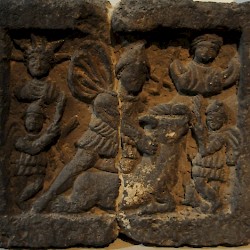Sofia, National History Museum
Q1968325The National Museum of Archaeology is situated in the very center of Sofia, in one of the oldest preserved buildings in the city – Buyuk (the Big) mosque, built in the fifteenth century.
The permanent exhibition is displayed in several halls where masterpieces of art and ancient cultures found in nowadays Bulgaria are put on public view: starting with the oldest traces of human activity discovered so far in Europe (1.6 million years before present) up to the end of the Middle Ages (seventeenth century).
Among the most impressive exhibits in the Prehistory hall is the figurine-vessel of the Mother-Goddess from the Neolithic site of Mursalevo, 6000 years BCE, and the Thracian treasures and funeral gifts in the Vault hall are breath-taking. Among them are the Valchitran gold treasure, the bronze portrait head of the Odrysian king Seuthes III, the gold mask of a Thracian ruler, the Lukovit silver treasure, and a number of other masterpieces of ancient artistic metalworking.
The visitors will also enjoy many other significant and characteristic aspects of the Thracian, Greek, Roman, Byzantine, Bulgarian and Ottoman cultures, that developed in nowadays Bulgarian lands through the centuries. These include gold and silver jewelry, a unique stone “poster” inviting the citizens of ancient Serdica to gladiator games, bronze portrait head of the Roman emperor Gordian III, the only one copy of one of the most famous monuments related to the formation of the Bulgarian kingdom (the Madara horseman rock-cut relief, part of the UNESCO world heritage), artifacts from the Medieval Bulgarian capitals Pliska and Preslav, etc. The oldest Bulgarian icon – the ninth century ceramic icon of St. Theodor, is also displayed here.
The Museum is united with the National Archaeological Institute, which is the biggest scientific archaeological institution in the Balkans and coordinator of the archaeological field surveys in Bulgaria.
[Text kindly shared by the museum itself.]
This museum was visited in 2014.







